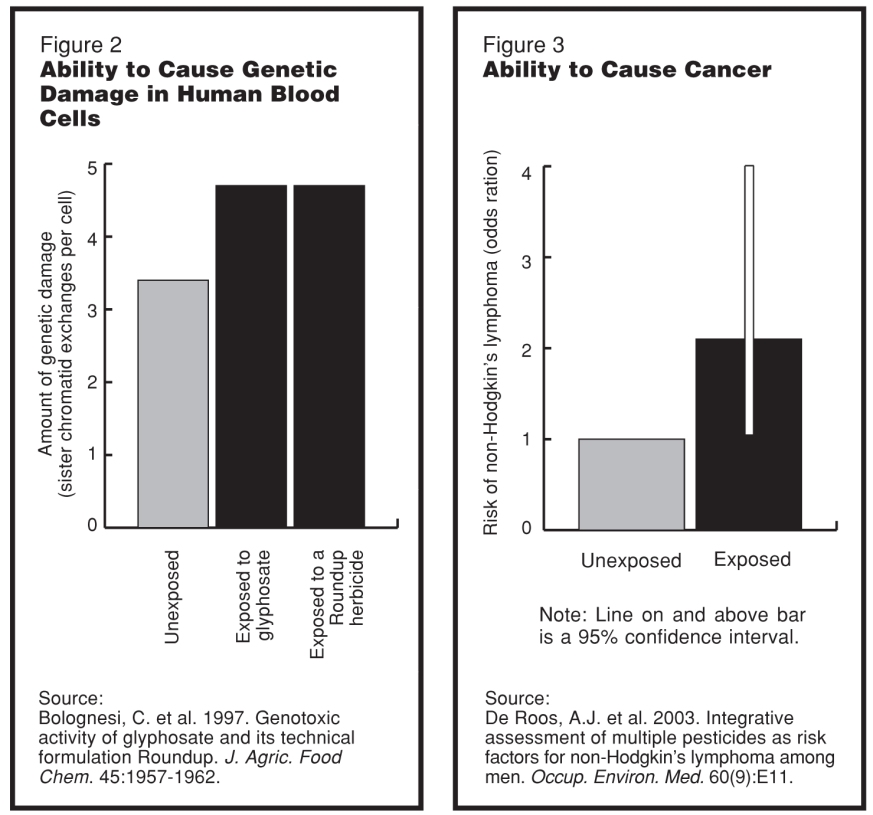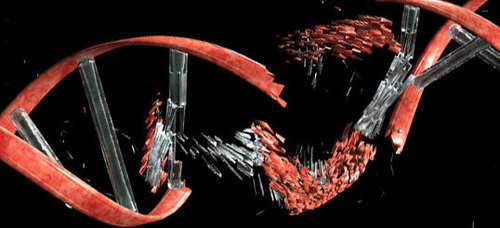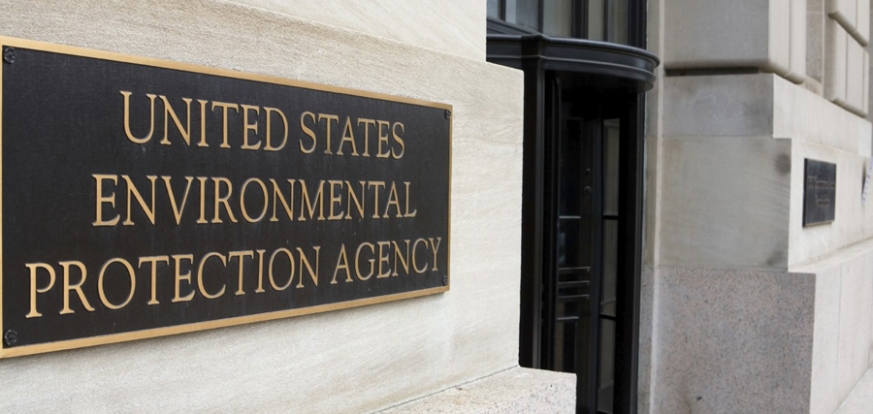valley ranch
Garden Master
- Joined
- Dec 22, 2014
- Messages
- 5,742
- Reaction score
- 5,734
- Points
- 367
SOBERING FACTS ABOUT MONSANTO’S ROUNDUP (GLYPHOSATE) AND HOW THE EPA IGNORES DANGERS
MAY 19, 2013 KRISTEN WATTS NO COMMENTS

Presented below are ten sobering facts about Glyphosate (the key ingredient in Monsanto’s RoundUp weedkiller, which the majority of Monsanto’s seeds are genetically engineered to withstand):
1) Glyphosate causes disease and biological / physiological disorders in crops
Fifteen years of research by the USDA indicates that the chemical glyphosate, the key ingredient in RoundUp herbicide, is linked to fungal root disease in plants.
Article:http://www.reuters.com/article/2010/04/13/us-usa-gmos-regulators-idUSTRE63C2AJ20100413
Purdue Report about biological/physiological disorders: http://www.btny.purdue.edu/weedscience/2011/GlyphosatesImpact11.html

2) Glyphosate is no longer effective at killing weeds
Article about Superweeds: http://www.nytimes.com/2010/05/04/business/energy-environment/04weed.html
International Database on Glycines (Glyphosate family):http://www.weedscience.com/summary/MOA.aspx?MOAID=12
Iowa State: http://www.extension.iastate.edu/CropNews/2011/0120hartzler.htm
University of Arkansas: http://bumperscollege.uark.edu/test_cses2012/1946.php
National Academy of Sciences Report: http://www.nap.edu/catalog.php?record_id=12804

3) Glyphosate use is increasing steadily
According to the USGS, more than 88,000 tons of glyphosate were used in the United States in 2007, up from 11,000 tons in 1992. Since the advent of “super weeds,” the use of glyphosate (and other even stronger weed killers) has risen significantly.
Article: http://www.reuters.com/article/2011/08/31/us-glyphosate-pollution-idUSTRE77U61720110831

4) Glyphosate is not breaking down as promised
In 1996, New York’s attorney general sued Monsanto over the company’s use of “false and misleading advertising” about RoundUp. That case ended with Monsanto agreeing to stop calling Roundup “biodegradable,” and to pull ads claiming that Roundup was “safer than table salt,” “practically nontoxic,” and ”stayed where you put it.”
Two decades after the advent of “RoundUp Ready” crops and their dominance in the agricultural marketplace, the evidence of their falsehoods abound: multiple studies have found significant levels of glyphosate in streams, soil, air, rainwater, and groundwater:
Wastewater: http://toxics.usgs.gov/highlights/glyphosate_wastewater.html
Rain and Streams: http://www.usgs.gov/newsroom/article.asp?ID=2909
Groundwater: http://www.ncbi.nlm.nih.gov/pubmed/22101424
Soil: http://www.docstoc.com/docs/1249990...-and-Foliar-Amendments-on-Soil-Microorganisms (slideshow; see presentation here; view reporthere)
Atmosphere, Soil and Surface Water: http://environment.gov.ab.ca/info/library/6444.pdf
Mississippi and Iowa Streams: https://gsa.confex.com/gsa/2009AM/finalprogram/abstract_162346.htm
Glyphosate residues are also found in our food: a recent study found that Glyphosate residues in the main foods of the Western diet – sugar, wheat, and genetically modified corn and soy – inhibit critical enzymes in mammals [which] manifests slowly over time, as inflammation damages cellular systems throughout the body.Source: http://www.mdpi.com/1099-4300/15/4/1416
No surprise, a study done in Germany in 2012 found glyphosate in all of the urine samples it took from non-agricultural workers in Berlin, at levels 5-20 times the limit for drinking water. Source: http://www.ithaka-journal.net/herbizide-im-urin?lang=en
MAY 19, 2013 KRISTEN WATTS NO COMMENTS

Presented below are ten sobering facts about Glyphosate (the key ingredient in Monsanto’s RoundUp weedkiller, which the majority of Monsanto’s seeds are genetically engineered to withstand):
1) Glyphosate causes disease and biological / physiological disorders in crops
Fifteen years of research by the USDA indicates that the chemical glyphosate, the key ingredient in RoundUp herbicide, is linked to fungal root disease in plants.
Article:http://www.reuters.com/article/2010/04/13/us-usa-gmos-regulators-idUSTRE63C2AJ20100413
Purdue Report about biological/physiological disorders: http://www.btny.purdue.edu/weedscience/2011/GlyphosatesImpact11.html

2) Glyphosate is no longer effective at killing weeds
Article about Superweeds: http://www.nytimes.com/2010/05/04/business/energy-environment/04weed.html
International Database on Glycines (Glyphosate family):http://www.weedscience.com/summary/MOA.aspx?MOAID=12
Iowa State: http://www.extension.iastate.edu/CropNews/2011/0120hartzler.htm
University of Arkansas: http://bumperscollege.uark.edu/test_cses2012/1946.php
National Academy of Sciences Report: http://www.nap.edu/catalog.php?record_id=12804

3) Glyphosate use is increasing steadily
According to the USGS, more than 88,000 tons of glyphosate were used in the United States in 2007, up from 11,000 tons in 1992. Since the advent of “super weeds,” the use of glyphosate (and other even stronger weed killers) has risen significantly.
Article: http://www.reuters.com/article/2011/08/31/us-glyphosate-pollution-idUSTRE77U61720110831

4) Glyphosate is not breaking down as promised
In 1996, New York’s attorney general sued Monsanto over the company’s use of “false and misleading advertising” about RoundUp. That case ended with Monsanto agreeing to stop calling Roundup “biodegradable,” and to pull ads claiming that Roundup was “safer than table salt,” “practically nontoxic,” and ”stayed where you put it.”
Two decades after the advent of “RoundUp Ready” crops and their dominance in the agricultural marketplace, the evidence of their falsehoods abound: multiple studies have found significant levels of glyphosate in streams, soil, air, rainwater, and groundwater:
Wastewater: http://toxics.usgs.gov/highlights/glyphosate_wastewater.html
Rain and Streams: http://www.usgs.gov/newsroom/article.asp?ID=2909
Groundwater: http://www.ncbi.nlm.nih.gov/pubmed/22101424
Soil: http://www.docstoc.com/docs/1249990...-and-Foliar-Amendments-on-Soil-Microorganisms (slideshow; see presentation here; view reporthere)
Atmosphere, Soil and Surface Water: http://environment.gov.ab.ca/info/library/6444.pdf
Mississippi and Iowa Streams: https://gsa.confex.com/gsa/2009AM/finalprogram/abstract_162346.htm
Glyphosate residues are also found in our food: a recent study found that Glyphosate residues in the main foods of the Western diet – sugar, wheat, and genetically modified corn and soy – inhibit critical enzymes in mammals [which] manifests slowly over time, as inflammation damages cellular systems throughout the body.Source: http://www.mdpi.com/1099-4300/15/4/1416
No surprise, a study done in Germany in 2012 found glyphosate in all of the urine samples it took from non-agricultural workers in Berlin, at levels 5-20 times the limit for drinking water. Source: http://www.ithaka-journal.net/herbizide-im-urin?lang=en







